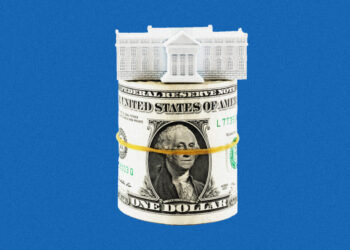The conservative government of the western Canadian province of Alberta has invoked a last-resort clause in the country’s Constitution to insulate three sweeping trans bills from legal challenges.
The three bills limit access to gender-affirming care for minors, prohibit trans youth from competing in women’s and girls’ sports and introduce a requirement for parents to approve informal pronoun changes at school for children 16 and under.
The measures are considered by some advocates for transgender people as the strictest in Canada and the province’s constitutional maneuver essentially prevents individuals or organizations from pursuing legal challenges.
The bills passed the provincial legislature at the end of last year, and one of them is already suspended as it faces a court challenge that could be dismissed in light of the province’s constitutional maneuver.
The bills also limit sexual education only to children whose parents have opted them into the classes.
Many of these measures mirror policies introduced at the state level in some parts of the United States, but those bills are facing multiple challenges in American courts. Alberta’s use of the constitutional clause would bar that avenue.
The provision, known as the “notwithstanding clause” of Canada’s Constitution, allows provinces or the federal government to enact laws that could otherwise be overturned because they violate constitutional rights. It has some exceptions, like those guaranteeing elections.
Danielle Smith, the premier of Alberta, framed the move to invoke the notwithstanding clause — a measure no other constitutional democracy in the world has — as a matter of children’s safety.
“These lawsuits could take years to resolve, including possible appeals to the Supreme Court,” she said. “These delays are not acceptable to this government when children are in harm’s way.”
Gender-affirming care and other policies affecting transgender people, particularly minors, have become a culture-war issue in the United States and other countries.
Some physicians and mental-health experts highlight that a small number of people who transition — research indicates less than 1 percent — later regret it. Other critics focus on what they view as unfair treatment of girls and women in sports when they compete against trans women.
But many trans people and advocates see policies like Alberta’s as a threat to their rights and health.
Using the notwithstanding clause to protect the bills from legal challenges is an extraordinary step. But Ms. Smith has invoked it for four bills in just the past few weeks: in the case of the three trans bills, as well as an earlier bill to end a teachers’ strike.
The notwithstanding measure was introduced as a compromise that allowed Canada to adopt its 1982 Constitution. Its supporters argue that, in a democracy, elected legislators rather than appointed judges should have the final say on the law. Critics say it allows the majority to erode the rights of vulnerable minorities.
Concerns over its frequent use recently have led to challenges that will be heard by Canada’s Supreme Court next year.
One case involves Quebec’s use of the clause to shield a provincial law around religious expression. A second case involves Saskatchewan, which neighbors Alberta, deploying the clause to insulate its own trans bill.
Transgender advocates say Ms. Smith’s use of the clause is a chilling assault of Albertans’ rights.
“This is a unique provision of our Constitution,” said Bennet Jensen, director of legal affairs at Egale Canada, an L.G.B.T.Q. advocacy organization. “So the idea that government could limit the fundamental rights of its population, is striking, and I think disturbing.”
Egale Canada is co-counsel in ongoing legal challenges against some of the bills and was successful in winning a temporary injunction on the bill limiting medical interventions for trans youth.
In an interim ruling in June, a judge found the bill risked violating parts of the Constitution.
Sheila Cunningham, a trans woman in her 50s living in Red Deer, Alberta, said that she supported the bills, irrespective of the notwithstanding clause, because there were provisions allowing children with severe gender dysphoria to get medical treatment, while stopping others with moderate or milder cases from accessing treatment until adulthood.
Ms. Smith has argued that the bills aim to put parents at the center of decisions about their children.
But for some parents of trans children in Alberta, the bills, and the inability to challenge them, have the opposite effect.
Kim Little’s daughter, now 13, has been using puberty blockers since she was 11, Ms. Little said, under close medical supervision and the support of her parents.
She said she and her partner had confronted Ms. Smith during a community meeting last year, but that the premier had argued with them instead of listening.
“She came to debate the parents of a trans kid and tell us why we were wrong, and how the medical community doesn’t always have things right,” Ms. Little said. Ms. Smith’s office did not comment on Ms. Little’s description of the interaction.
“I am so worried about these kids,” Ms. Little added, “that are essentially being told by the government that they don’t matter, and that they’re wrong, and that it’s not OK to have these lifesaving therapies that medical doctors and associations and experts regulate and approve.”
Vjosa Isai contributed reporting.
Matina Stevis-Gridneff is the Canada bureau chief for The Times, leading coverage of the country.
The post Alberta Pushes Through Trans Policies Described as Most Restrictive in Canada appeared first on New York Times.




